

The last tank clash in the Ruhr pocket involved the lone surviving Tiger 1 of Gruppe Fehrmann F01 and the Comets of the 3rd Royal Tank Regiment. The encounter started on April 12th 1945 after the British elements of the 29th Armoured Brigade managed to cross the Wesel River northeast of Essel in an attempt to reach Route 7, to cut off Hamburg from Hannover. Gruppe Fehrmann’s small battle squad including the last Tiger 1 F01 attacked the bridgehead at a road intersection, managing to disable one Comet, destroyed one more Comet and an armored car. The next day, F01 attacked the bridgehead again, but this time the lone Tiger had to withdraw after being the target of an artillery barrage. F01 withdrew north along Esseler Damm and finally paused near a forest road (marked red X on the map) close to the intersection of Route 7.
Meanwhile, Squad C of the 3rd Royal Tank Regiment responded by making a long trek through the woodlands heading east, and then due north along Route 7, and finally re-approaching Esseler Damm from the east using a dirt road through the woods. The lead Comet commanded by Sergeant Hardy spotted the idling Tiger along Esseler Damm about 100 yards away. Unteroffizer Franzen of F01 also saw the approaching Comet to his left and started to traverse his own turret but the Comet fired first with his 77mm striking the Tiger on the left side and igniting the secondary fuel tank. The German crew bailed out without losses and retreated by foot. C Squad of the 3rd RTR continued to sweep the area to clear it of German infantry to secure the bridgehead and Route 7. This was the last recorded tank vs tank battle in the Ruhr Pocket and the last German units surrendered on the 15th April 1945.
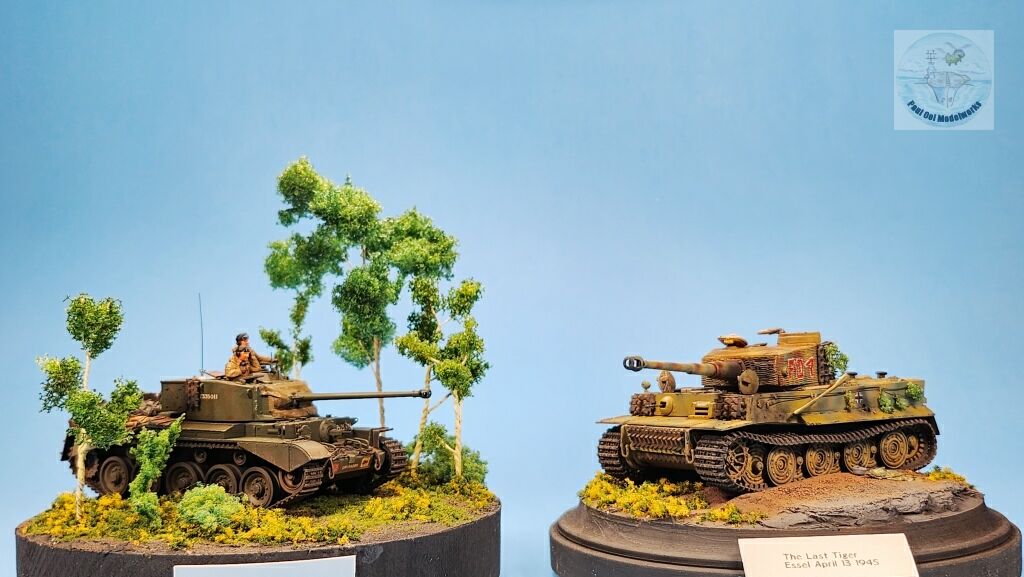
In a side-by-side comparison of the two tanks, it is obvious that the Tiger is still the heavier and more well-armored of the two. In a frontal fight, the Tiger’s 88mm would still devastate the Comet, and at distance, the latter’s 77mm would still not be able to penetrate the Tiger’s frontal armor. However, whereas the Tiger is slow and sluggish, the Comet has mobility and speed and once it flanks the Tiger as in the Esseler Damm fight, the 77mm HV can pierce the thinner side walls of the Tiger. In terms of mechanical simplicity and reliability, the Comet represented the shape of the future with the simple Christie chassis that is still the standard of today’s MBTs.
Gallery

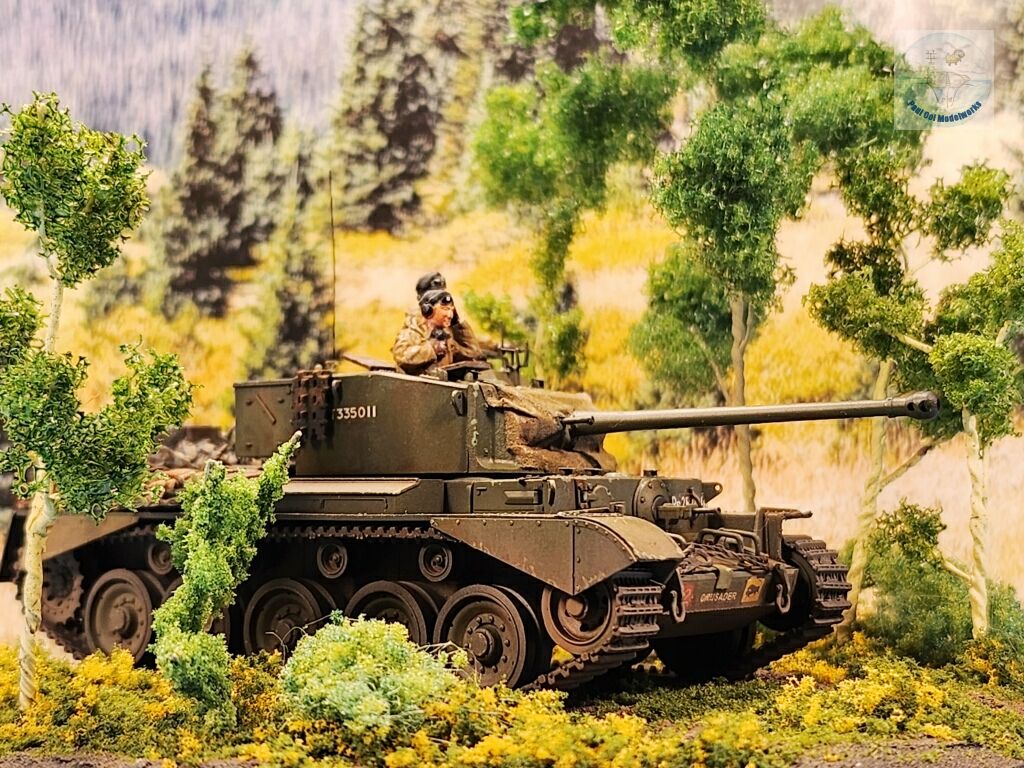
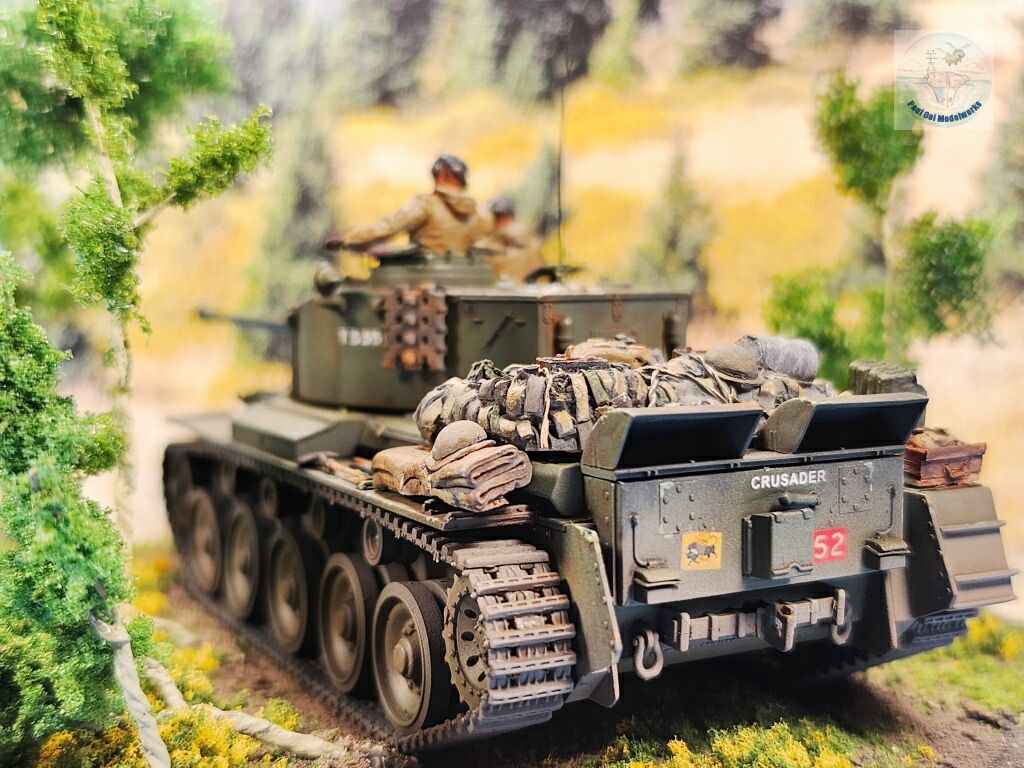





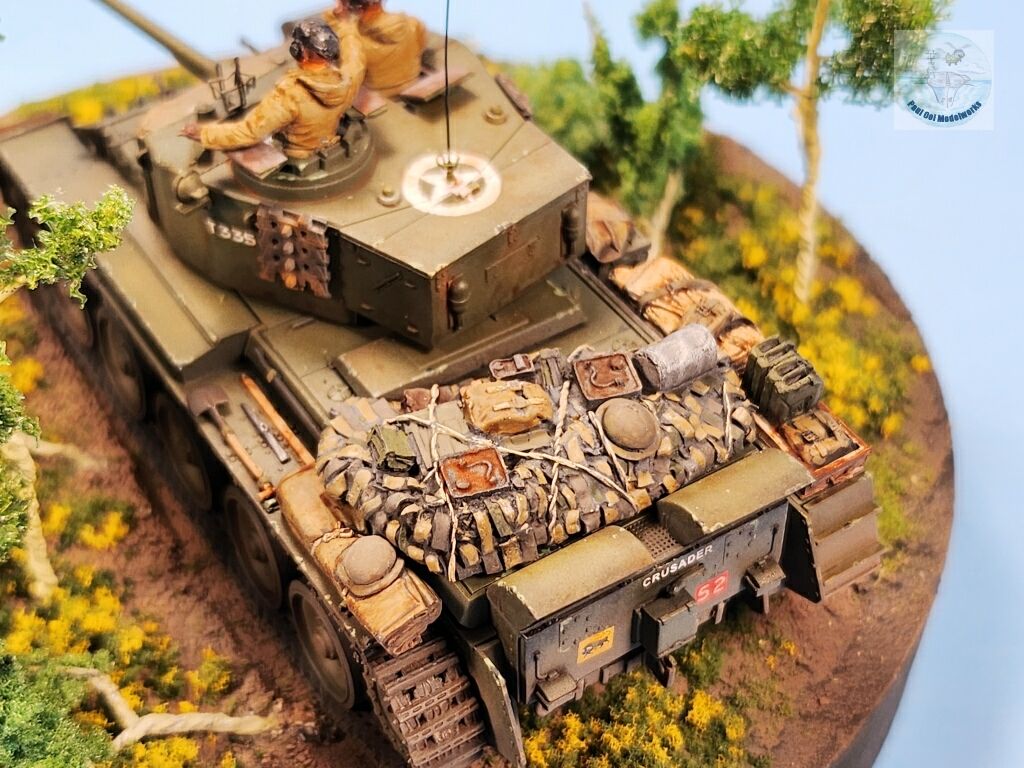
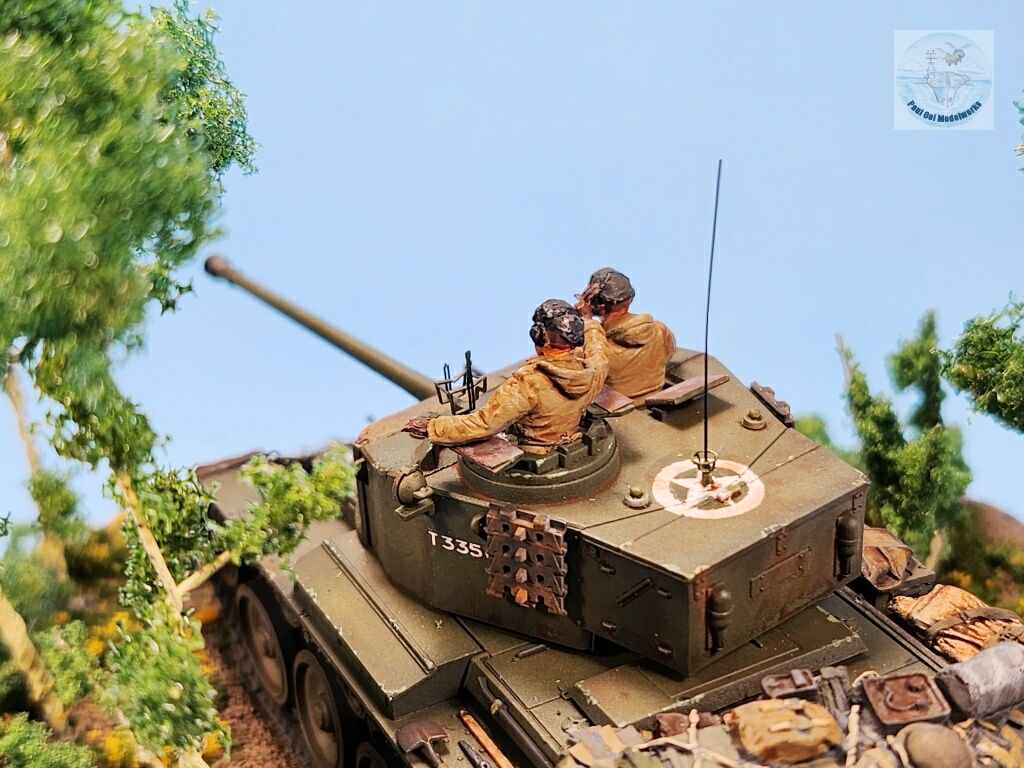

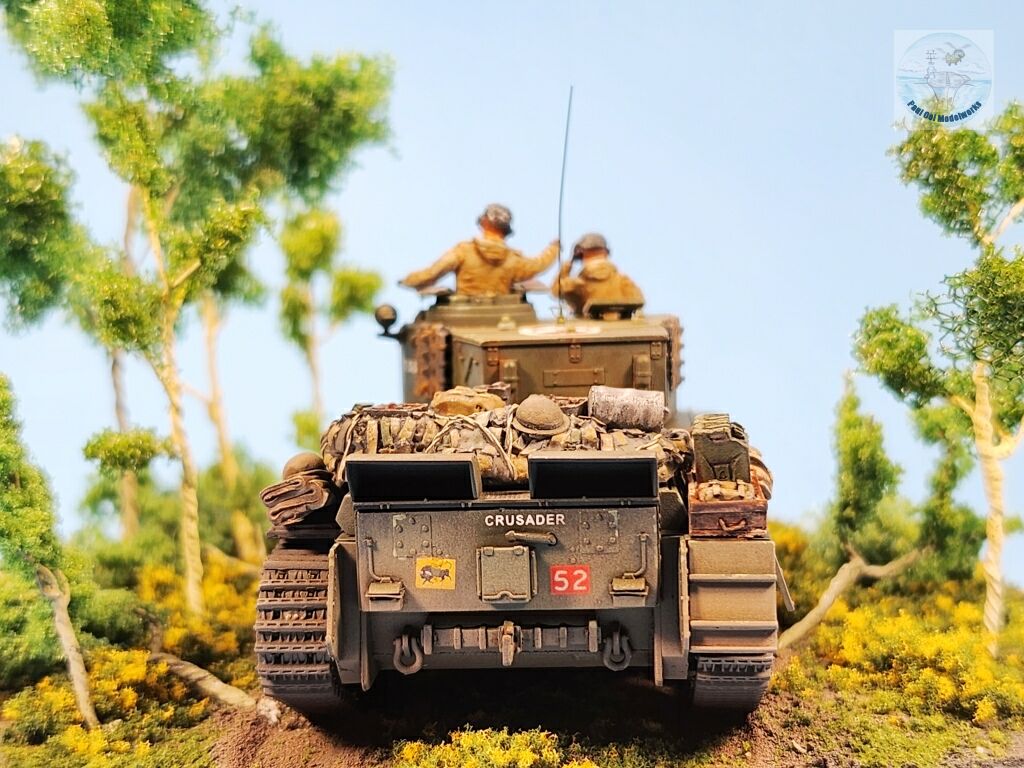




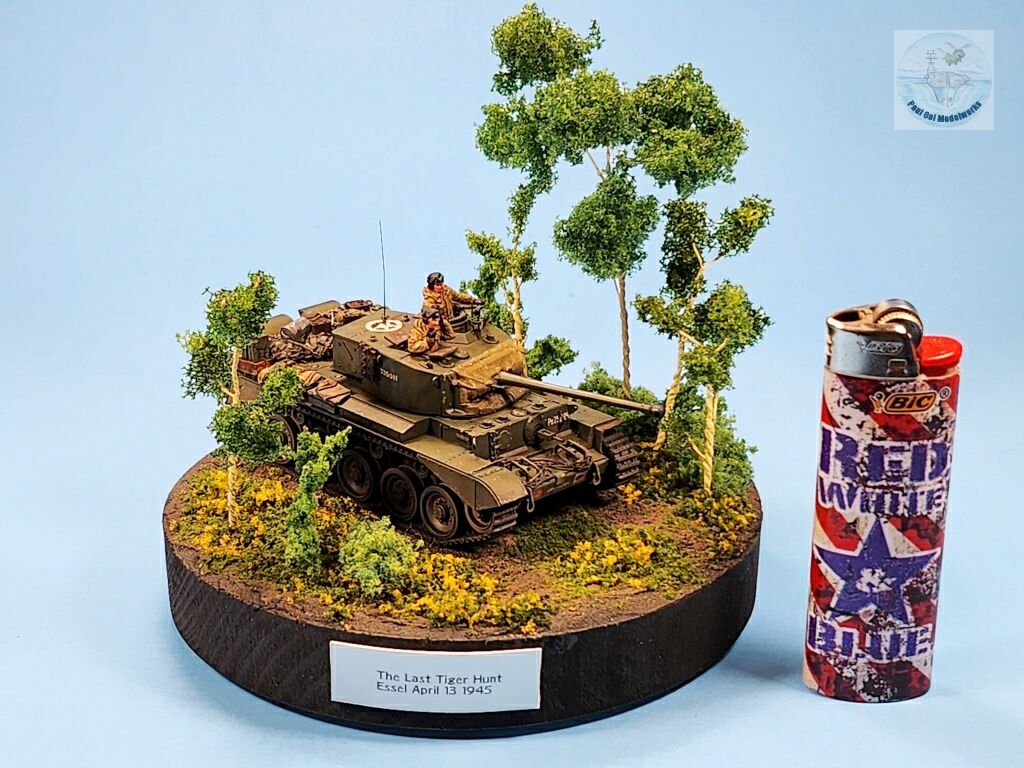
Construction Notes
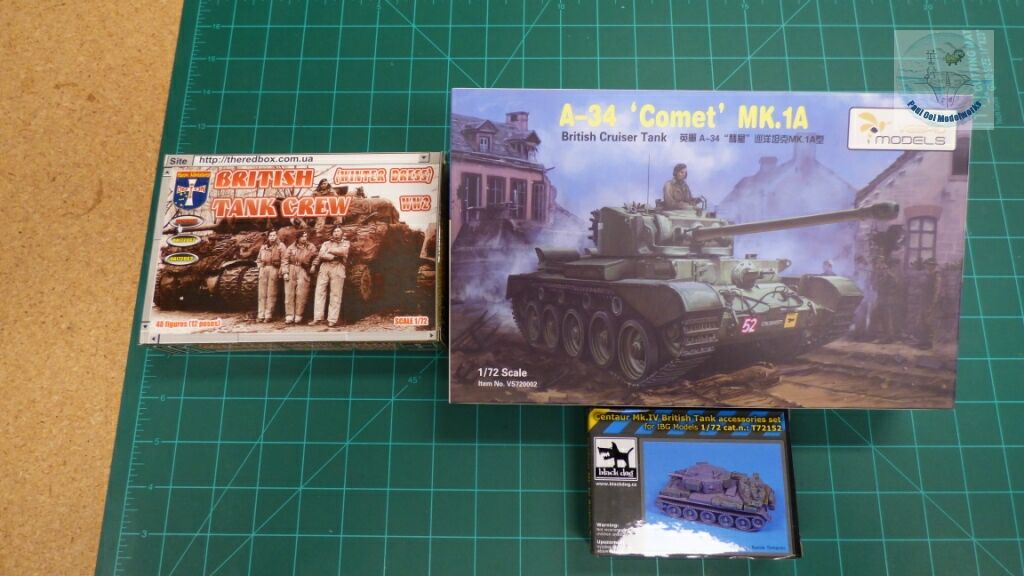
The 1/72 Vespid Comet Mk. 1A kit is almost identical to the one that I recently built except that it had the WW2 decals and (to my regret) did not have the shrouded gun mantel resin piece the the Mk. 1B kit had. Unlike the previous build which was in-camp, this particular model was for a tank on-the-move in campaign mode, so I piled it with lots of resin accessories from Black Dog meant for the Comet’s close predecessor, the Cromwell/Centaur. I also needed a couple of crew figures in winter clothing, so I got the crew figure kit by Red Box.



Since the kit came without the shrouded resin mantel, I had to make one for myself, as the WW2 pictures of the British push across the Rhine showed Comets with equipped with them. I made one using soft tissue paper cut into precise shape with punched holes for the main gun and side machinegun. The shape is then soaked in thinned while glue solution, and then carefully arranged over the gun mantel. I left this to dry thoroughly so that it would be ready to take on paint without disintegrating.


The other thing to do with the turret is to remove the wiring to trigger the smoke grenade launcher used only in the Mk. 1B. The 1945 version had no smoke grenade launchers. I carefully scrapped these away with my Xcto knife.

When looking at battle pictures of Comets in Northern Germany, I noticed that a lot of tanks lose their fenders as they fought their way from the Netherlands into the Fatherland. I modeled this by remove the entire front fender on the port side, as compared to the starboard side.
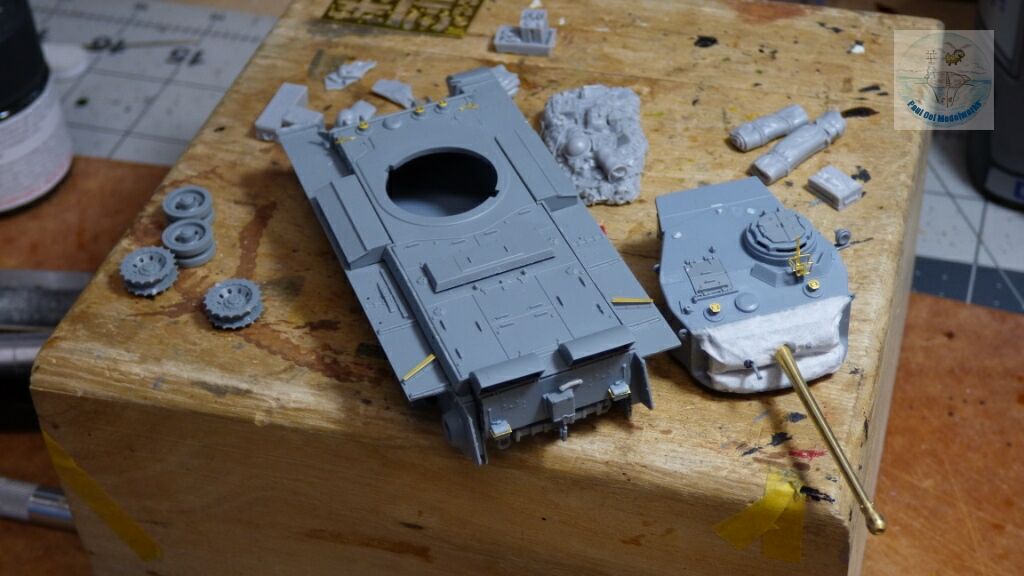
At long last, we are ready for the spray booth.

Using my usual under shadowing method, I finished the main color scheme with a lightened Tamiya XF-58 Olive Green (lightened by 20% XF-02 White).

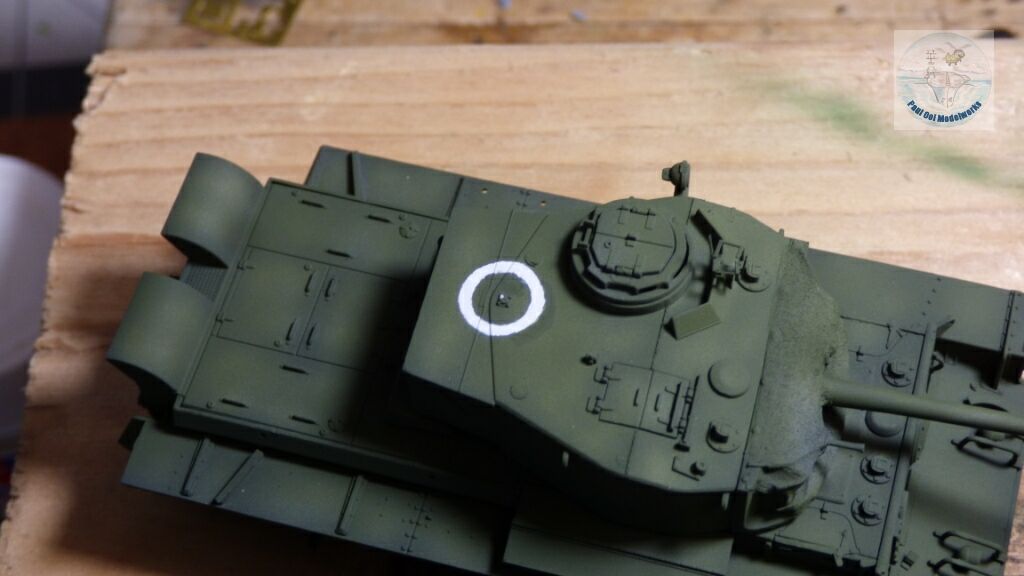

I also discovered that the kit decals did not include a suitably sized aerial recognition insignia used by the Allies in the west. I masked the white circle, and painted Tamiya XF-02. Then I hand painted the white star in the middle of the circle. The mantel shroud was painted Tamiya XF-49 Khaki.
This is

This is what the tank looked like just before track installation.

Another important detail is the addition of the tow rope coiled on front of the vehicle. The kit came with the tow loops but not the rope or cable itself. I used pewter-colored nylon thread to make the cable and wound it around the holding fixture.

An oil wash of Burnt Umber was applied over the entire tank after the tracks and fenders were attached. I purposely attached the rear triangular piece askew as though it would be next to fall off.

Next, the plethora of strapped on blankets, tarp sheets, the big pile of hessian mesh were painted and attached to the rear part of the vehicle.

The crew gets added, and the model gets all kinds of pastel chalks applied for the final weathering of the tank.

The display base has the spring foliage very similar to the country track close to K149 Esseler Damm where there is a historical marker for “Der Tiger vom Essel”.


[…] excellent account. Ialso built the Comet that took out this Tiger with its high velocity 77mm in the next blog. The F01 was really a hodge-podge Tiger cobbled together with a late production turret with a […]